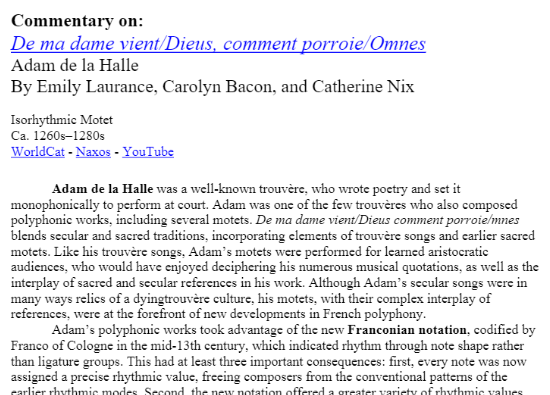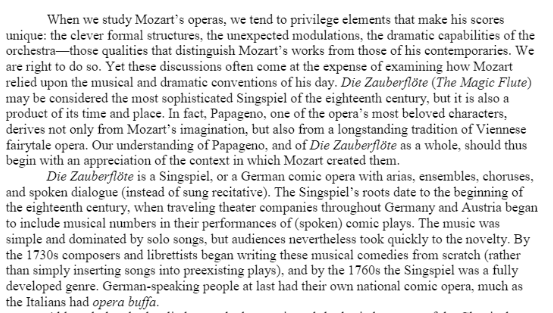In this blog post, we’ll take you on a guided tour through the structure of a commentary within the A-R Music Anthology. Discover how each commentary can serve your curriculum by presenting historical and theoretical context for selected works within ARMA!
Check out our previous post HERE for more information on the inner workings of ARMA articles!
Overview
Let’s start out with the basics!
Commentaries are about 1,200 words long, which makes them very easy to incorporate into music history and music theory courses.
All commentaries have a four-part structure:
- Identify the work
- Establish its context
- Discuss its structure
- Explain its significance
This structure contributes to the consistency found throughout ARMA!
Resources
Each commentary opens with a number of resources at the top of the first page including links to the following:
- The ARMA score
- A Worldcat example
- A Naxos recording
- A YouTube video
These resources are optimized to engage the reader both inside and outside of the article!


Context
The first paragraph begins with important contextual information about the composer and the work.
The information is presented concisely, making these commentaries the perfect add-ons to your syllabus!
Texts and Translations
All commentaries on texted works include the full text and translations of that work. This takes the guesswork out of finding reliable text and translation sources!
You will also find that the discussions of structure can involve outlines of movements, with some useful tables that summarize the features effecitvely!

Adding commentaries to your curriculum will enhance the learning experience of your students by presenting reliable information concisely from a dependable source!
CONTACT US!
If you have any questions about how to use ARMA, you can reach out directly to us!
- Send an email to ARMA@areditions.com for personalized assistance.
- Schedule a meeting with us to go over the many amazing features of ARMA!